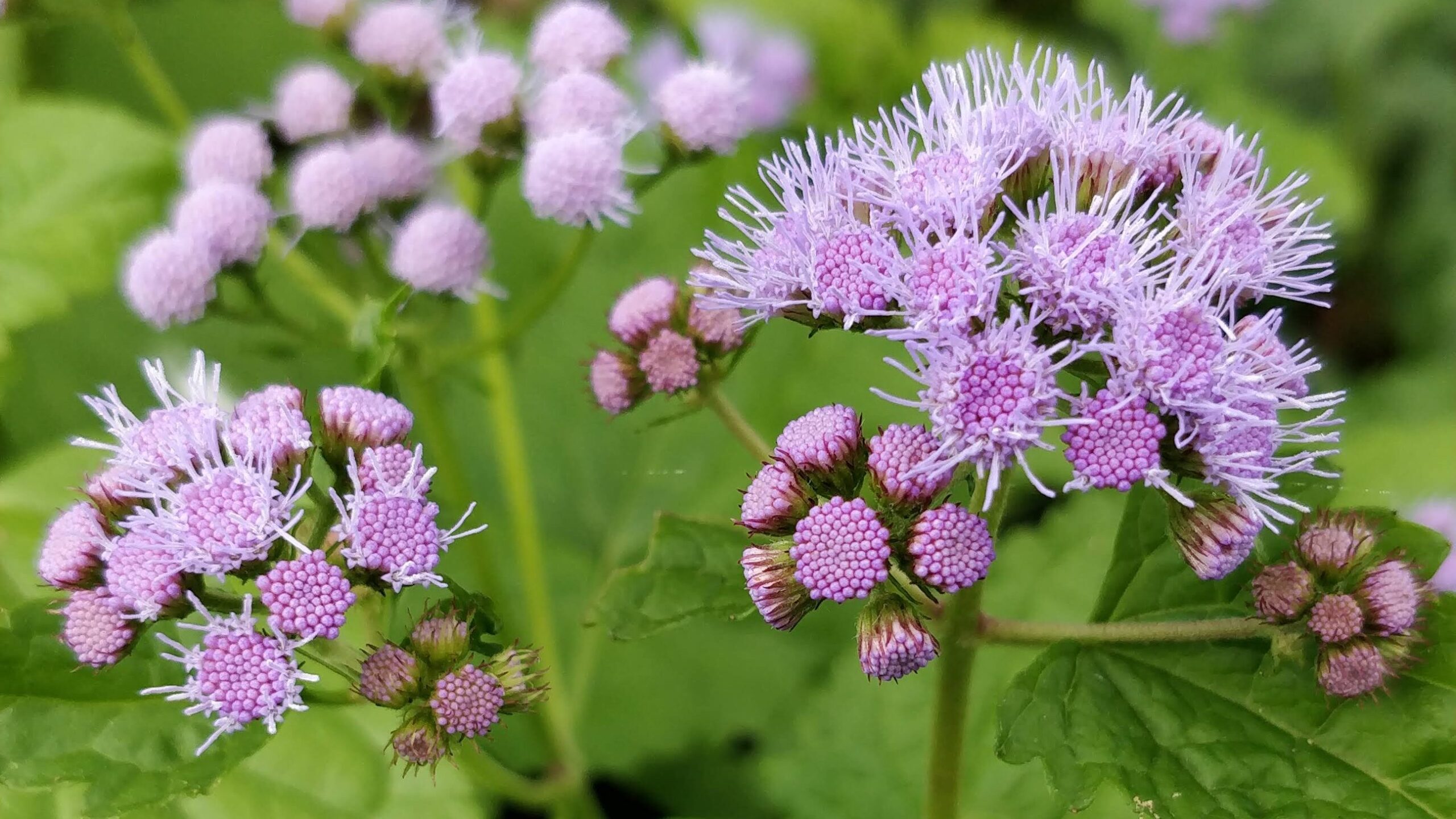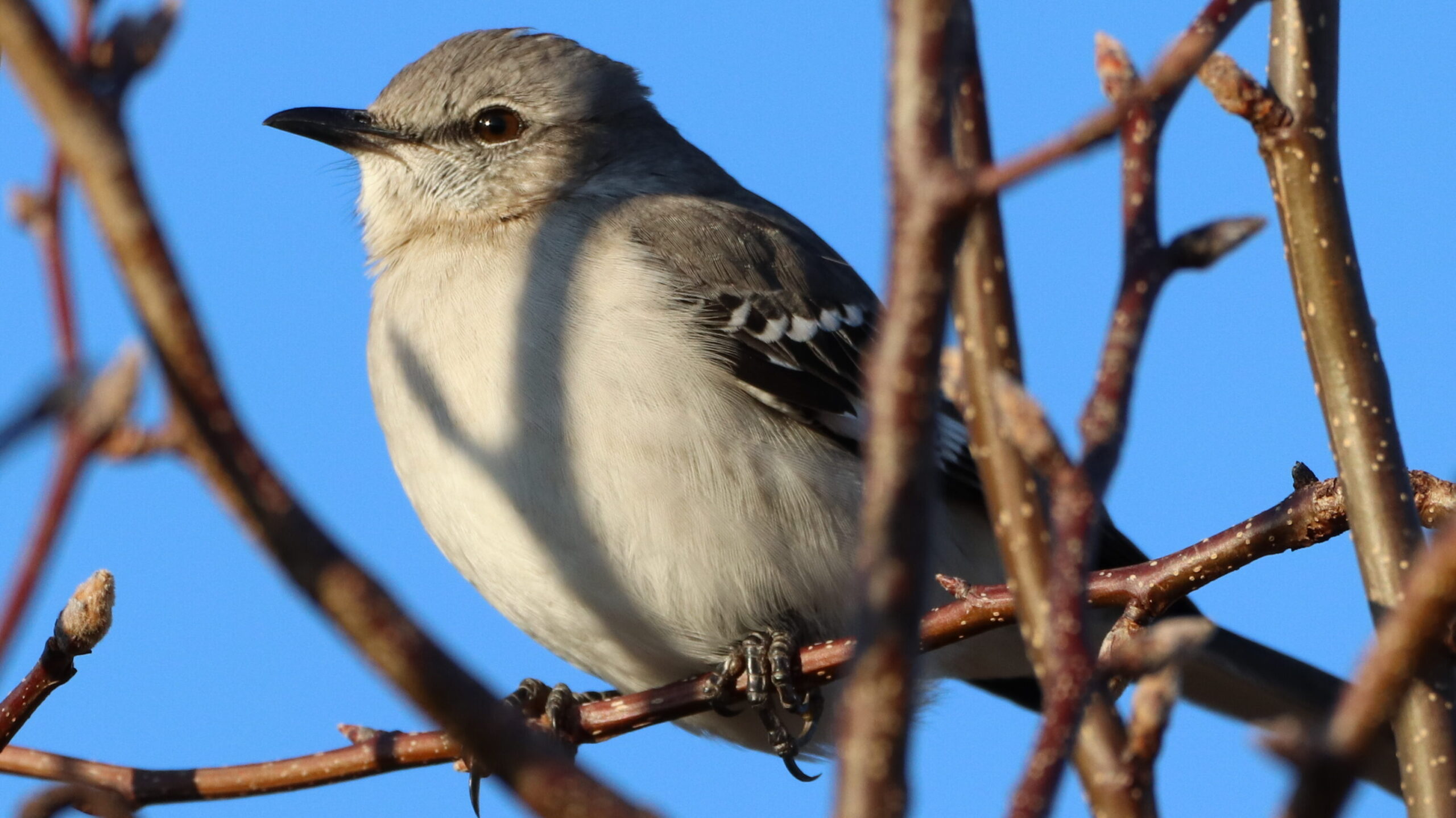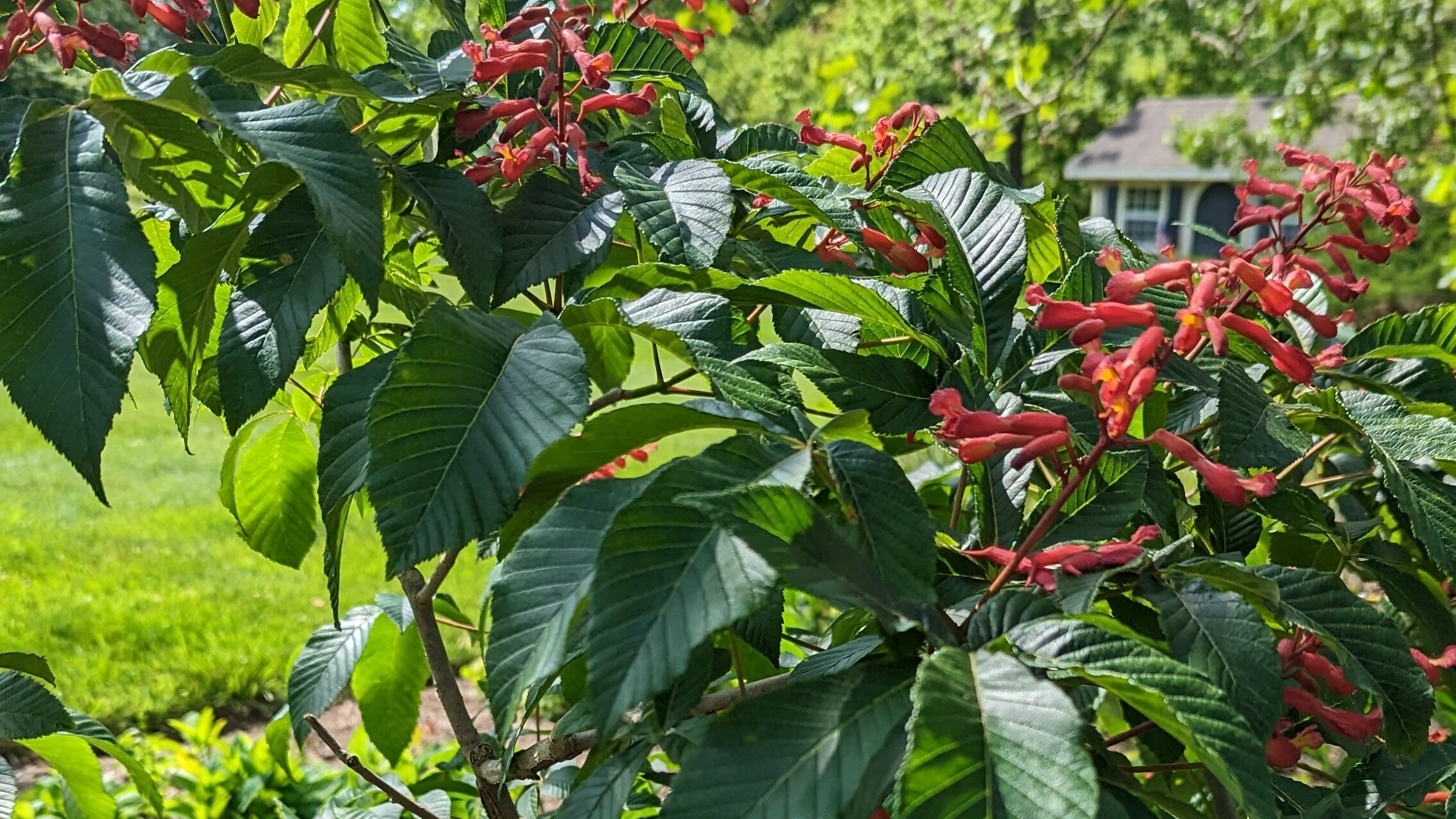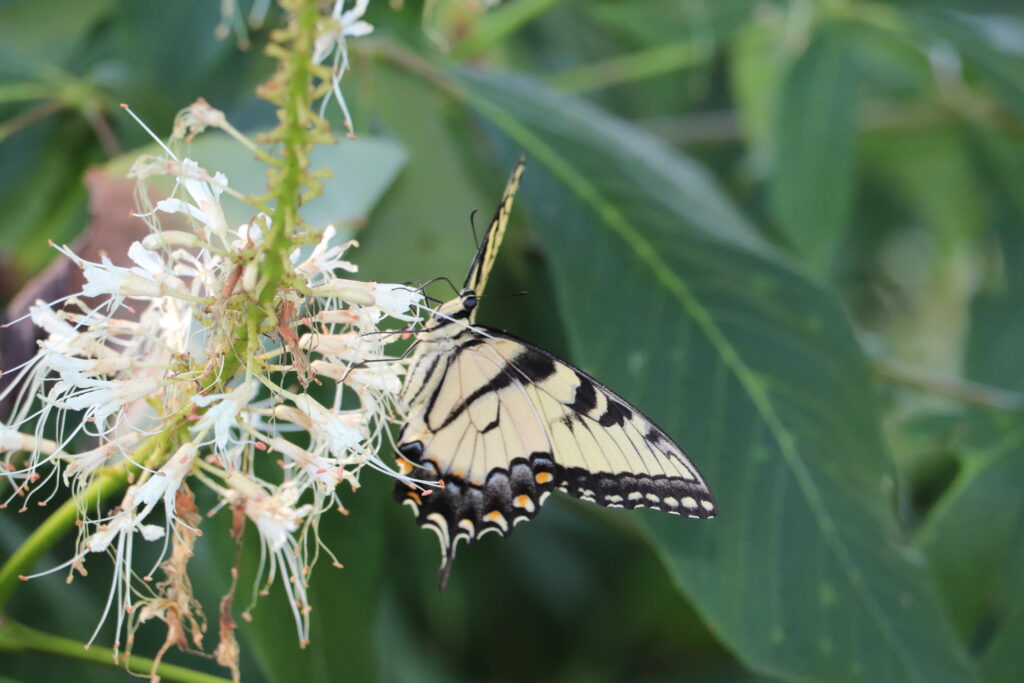When talking plants, Latin names may be painfully hard to pronounce, but they are helpful once you get to know them
Buck, buck and buck.
A deer with antlers, one dollar, a horse kicking out their back legs. Words can have a whole lot of different meanings, and unless you know the context of the word, language can be a tricky thing for sure.
Equally as confusing, plant names can be daunting unless they each have their own little personal identifier or skinny name plate sticking right out of the dirt, or pinned to the tree like a dog tag. While blue mistflower certainly rolls off the tongue beautifully… but Conoclinium coelestinum, hmm, not so much? It is easy to lean towards the simpler term. (Some might remember it used to be Euphatorium coelestinum but it was reclassified.) But the simple term, or common name, could also get you something you didn’t intend. Blue mink, or Ageratum houstonianum looks nearly identical to the below image, but it is a native flower to Mexico!

Let’s break it down. Beginning with the mighty tree, the oak. There are so many different types of oaks out there. You can find an oak tree pretty much everywhere within the US (except Alaska) and Canada and Mexico, but different oaks are found in different areas. They are therefore, native to certain areas. Take the White Oak (Quercus alba) for example. You will not find this tree in the western US. Similarly, you will not find the Canyon Live Oak (Quercus chrysolepis) in the Eastern US. There are something like 500 or more types of oak trees and shrubs! This is where knowing the seemingly annoyingly unpronounceable words comes in handy. Do you recall the 7 levels of scientific classification from science class?
They are, from largest to smallest, kingdom, phylum, class, order, family, genus, and species.
On the taxonomy ladder, genus and species are so important when selecting plants for your garden. And believe it or not, many are actually quite descriptive of characteristics of the plant once you decipher the Latin and dig a little deeper into the origins of words. When you don’t use the Latin terms, you may find yourself getting something you really didn’t want. For example, Google the words “red maple” and you will get a host of results! After a little practice though, something clicks, and you’ll be loving your Latin.

It really clicked for me when I learned the scientific name of the Northern mockingbird, which is Mimus polyglottos, which loosely translated is “mimic of many tongues”. Once I heard that, I jumped on the Latin wagon right away! If you have heard a mockingbird singing in a tree, it can often sound like there are 9 different birds singing!
…many are actually quite descriptive of characteristics of the plant once you decipher the Latin and dig a little deeper into the origins of words.
| contorta | Twisted |
| globosa | Rounded |
| gracilis | Graceful |
| maculata | Spotted |
| magnus | Large |
| nana | Dwarf |
| pendula | Weeping |
| prostrata | Creeping |
| reptans | Creeping |
So imagine if you will, that a friend recommends you plant an oak tree in your yard. (That’s a great friend by the way!) However, not knowing what type of oak could be the maker or the breaker of how long lived your tree is and you might want to pass the buck to that friend when your oak croaks. You would need to know what type of oak to ensure its success in your area.
Let’s get back to bucks. I have a few “buckeyes” in my yard. I have been able to distinguish them from each other for a while now, because I know when they flower. However, while they look very similar, they are actually very different, and knowing the genus and species is essential!

In my yard I have the scarlet buckeye, or red buckeye, or firecracker plant which are all “common” names to the scientific name Aesculus pavia. I also have the bottlebrush buckeye, Aesculus parviflora. They are both in the family Sapindaceae. (Words ending in -eae always denotes the family.) However, they bloom at different times and one has red flowers, while the other white but both can be called buckeyes. Notice too that they have the same Genus, Aesculus. Which, when you decipher that big word, it means
aesculifolius es-kew-li-FOH-lee-us
aesculifolia, aesculifolium
With leaves like horse chestnut (Aesculus)
Now let’s decipher the pavia vs the parviflora
pavia PAH-vee-uh
Named for Peter Paaw (1564–1617), Dutch physician, as in
Aesculus pavia
parviflorus par-vee-FLOR-us
parviflora, parviflorum
With small flowers, as in Aesculus parviflora, “parvi/parvus” meaning small
But wait, isn’t there a Horse Chestnut tree?
Yes, no doubt there absolutely is! Which is exactly why it is so important to know your Latin, or at the very least be aware of it. Maybe you read somewhere that a buckeye is a good plant for your yard and you might like to give it a try. You also heard that it is a native plant. Even better! But which one is native to my area, here in the Sourlands?

Aesculus parviflora or, the bottlebrush buckeye, some may consider native to the Southeastern United States. But I will tell you that it is thriving in my yard (in central New Jersey, in the middle of the Sourland Mountains) in the understory of a large tree. While some plants can be less common in the Sourlands, they can exist in small numbers and be considered part of our overall native plant community or bioregion. With climate change continuing to shift north, it is possible to see more and more plants spread further north. In the words of my landscape designer, David Hughes of Weatherwood Design, “my reasons for using plants that are in the greater ecoregion of the mid-Atlantic is to give nature the larger capability of success with more plant biodiversity (and therefore more wildlife biodiversity). My hope is that we can start to slow the pace of habitat degradation for which humans are almost solely responsible for.”
While some plants can be less common in the Sourlands, they can exist in small numbers and be considered part of our overall native plant community or bioregion.
If you want to see a complete map of the native range of a species, I recommend using: The Biota of North American Program, which will help determine where plants are actually native in the US down to the county level of natural occurrence:
http://bonap.net/Napa/TaxonMaps/Genus/County/Aesculus
Look at: North American Plant Atlas (NAPA) on bonap.org
One of the very first lessons in Latin nomenclature that I taught myself was in regards to milkweed. Here’s a plant that if you don’t know your genus and species, you are not going to be a successful gardener!
Some like shade, some like hot conditions. Knowing which type of milkweed likes what is essential to a healthy and glorious native plant garden! Click through the slides below to see what I mean about the importance of Latin! And keeping in mind, this is only a tiny amount of the types of milkweed plants that exist!
Don’t be discouraged when Latin names come at you rapid fire. Carl Linnaeus was not out to make things more difficult. He had a brilliant idea and the names are there to help us in the garden, not hinder us. So I encourage you to dig a little deeper and study those 14 letter words. Trust me, it gets addicting! Here’s a good long document to get you started.
See this document for an A-Z list of botanical names and their meanings. Happy reading!
2 Responses
I love the Latin names of plants too! I taught Latin for many years and always used nomenclature as one example of the enduring utility of Latin.
That’s great! It is certainly a lot to take in at first, but then once the ball is rolling….it gets going!